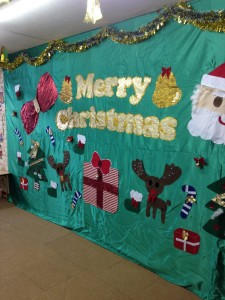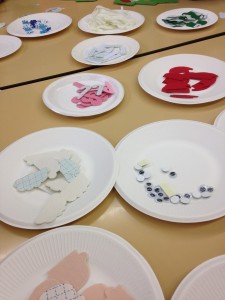

- 54. 10 Useful Pieces of Advice for Teaching with LEARNING WORLD #9 & 10
- 55. “Happy New Year!” “I don’t say that.”
- 53. Halloween 2019
- 52. READY Workbook Pg. 17
- 51. English-Uplift 1-Day Seminars
- 50. READY Workbook - vocabulary copying activity
- 49. 10 Useful Pieces of Advice for Teaching with LEARNING WORLD #8
- 48. 10 Useful Pieces of Advice for Teaching with LEARNING WORLD #7
- 47. 10 Useful Pieces of Advice for Teaching with LEARNING WORLD #6
- 46. 10 Useful Pieces of Advice for Teaching with LEARNING WORLD #5
- 45. 10 Useful Pieces of Advice for Teaching with LEARNING WORLD #4
- 44. 10 Useful Pieces of Advice for Teaching with LEARNING WORLD #3
- Kindergarten aged students
- Lower Elementary-school aged students
- Upper Elementary-school aged students
- Junior High and older students
- Others
10. ENGLISH FOR ARTS & CRAFTS
It’s close to the end of the year, and at the school where I teach, each lessons’ regular textbook content has been replaced by Christmas content. The classroom too looks more colorful and magical than usual…

I have tremendous admiration for the school staff. They always decorate the room beautifully AND they research and prepare materials for quite interesting Christmas arts & crafts for the students. In class-time the teachers hand out the pre-prepared materials to the students and give the instructions on how to make it.
In your school, do you do arts & crafts often?
It’s an area I personally don’t have strength in, for two reasons: I’m not overly artistic myself, and I always find it difficult during craft lessons to generate meaningful communication among the students. The teachers I work with often show their students the completed craft sample, then have the students ask for the materials one by one as they make it: “Eyes, please”, “A nose please” “Santa’s hat please” etc. I’m not overly inspired by this interaction because the students all do each step of the craft together and all use the same materials at the same time, so the English is too predictable.
In order to avoid the predictability of English, this year in all my classes, regardless of age and experience, I decided to:
- not show a completed sample
- place all the materials on the students’ table at the start
- not explain how to make it.
With all of the materials ready on their table, I said to the students: “Please start.”
After a moment of uncertainty, they asked “What do we do?”
“Make it,” I answered.
“Make what?” they asked.
Scooting around the question and with my marker on the whiteboard I said “Try this…” :
[ take ] ~
[ put ] ~
Using gestures I reminded the students the meanings of these two actions, and had them practice saying them.
Using materials from the trays on the table, I then showed the difference between
this and these and one of these.
One enthusiastic student, understanding that I wasn’t going to answer the earlier ”Make what?” question, suddenly took the initiative; reaching for the largest piece on the table she asked:
“Take this, yes?”
I instructed students to say “Do we take this?”
And it began…
“Do we take this?”
“Do we put this here?”
“Do we take these?”
“Do we put these here?”
“Do we take one of these?”
“How many do we take?”
“Is this OK?”
I answered each question “yes” or “no” accordingly, and the craft slowly came together.
By all means, check the video. I’m quite happy with the students. As their teacher, I feel their effort to use English is much more important than completing the craft.





















